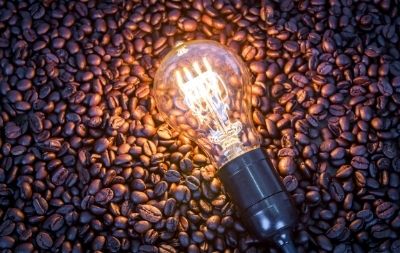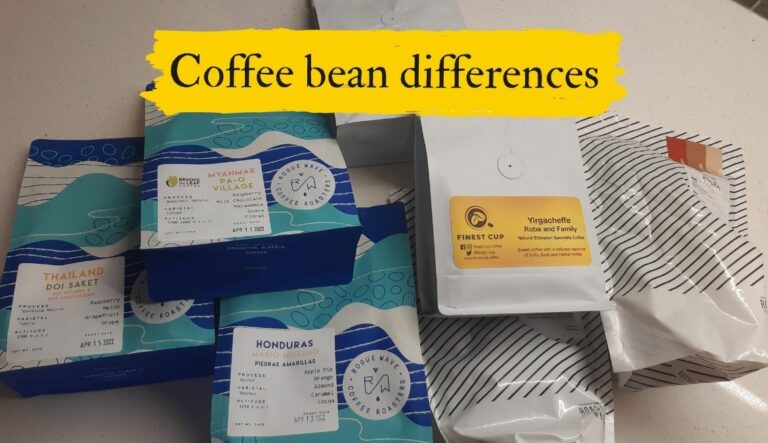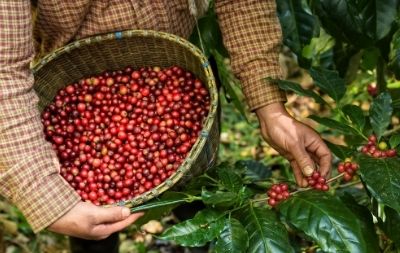
Most coffee lovers understand that coffee beans are roasted to add color, aromas and flavors. But many people do not know why roasting is important, or if it’s even required. I did some research to find out.
Are all coffee beans roasted? Coffee beans are almost always roasted to allow solubles to dissolve in water and to form oils that add aroma and taste. Unroasted green coffee beans are sometimes brewed, but lack the aromas and flavors we associate with coffee. Any cup of coffee you’ve had has undergone roasting to some degree.
The reasons for roasting coffee are quite interesting. And I was surprised to learn about a new coffee trend that uses unroasted green coffee beans. Read on to learn more.
When are coffee beans roasted?
Coffee beans are almost always roasted before being brewed into the delicious beverage most of us know and love. The roasting process brings out oils, aromas and flavors that give coffee its distinct taste.
What’s interesting is that a lot of coffee beans are roasted in a different location than the beans were grown. In fact, you likely have several local coffee roasters nearby. These roasting companies import coffee beans from the main coffee growing country, such as Ethipia, Columbia and Costa Rica, and then roast the beans locally.
This roasting process is necessary in order to transform an ordinary unroasted coffee bean into something that’s even capable of producing that cup of coffee you know and love.
When you buy whole or ground coffee beans at a grocery store or specialty coffee shop, they are already roasted. The degree to which they are roasted might change depending on preferences. Light roast coffee is roasted for less time, while dark roasts are roasted for longer durations.
The degree to which coffee beans are roasting will affect how your final beverage tastes. But both a light roast and dark roast bean will be capable of producing a beverage that tastes, more or less, like how you know coffee tastes.
Unroasted coffee beans, on the other hand, will almost certainly not capable of producing a “coffee-tasting” beverage. More on why that is in a moment.
For most people, every encounter they’ve ever had with coffee has involved roasted coffee beans. But there are some unique circumstances where coffee beans might not be roasted.
Some people drink green coffee drinks
Unroasted coffee beans are known as green coffee beans because that’s the color they naturally appear when harvested from coffee trees. The distinct brown coffee bean color comes from the roasting process.
There is a recent trend whereby people brew unroasted green coffee beans. These beverages do not contain many of the recognizable aromas and flavors we associate with a typical cup of coffee. They are often described as being lighter and very refreshing, when prepared in a cold brew style.
Here’s why:
Green coffee beans are less porous, which means the rate of extraction is much lower than a normal cup of coffee. This means that green beans must brew for a much longer duration to extract caffeine, flavor and other organic compounds from the beans. Therefore, green coffee is often used to prepare a cold brew style drink where the beans soak in water for hours instead of just a few minutes.
You can buy green coffee beans for home roasting
It’s also possible to purchase green coffee beans so that you can roast them at home or prepare green coffee of your own. To buy green coffee beans you typically have to go to a specialty coffee shop, coffee roasting company or purchase them online.
Green coffee beans are not commonly found in places where most people buy drinkable coffee because there simply isn’t enough demand for it. So there’s no need to be concerned if you think you might accidentally buy unroasted coffee beans next time you’re at the store.
Coffee beans are roasted so they can dissolve in water
The main reason coffee beans are roasted is to allow them to dissolve in water while you’re brewing them. Unroasted beans have a hard silverskin shell around the outside, which makes it difficult for organic materials inside the beans to dissolve when in contact with water.
In addition to the silverskin exterior, unroasted coffee beans are dense and not very porous on the inside. This prevents water from being able to extract any flavors.
Roasting makes coffee beans more porous
Porosity is another reason all coffee beans are roasted. Roasting breaks down the cellulose structure on the outside of coffee beans, causing them to become more porous.
This means that tiny holes open up which can allow water to enter the beans and extract organic compounds into your beverage. The longer the coffee beans are roasted, the larger, or more porous, these holes become.
The reason coffee has any flavor at all is because coffee beans have organic structures that dissolve in water. This means that little pieces of solid coffee beans convert into a liquid and mix with the water. The result is a tasty cup of liquid coffee.
In order for these soluble compounds to dissolve in water, they need to come into contact with it. This is why it’s important that the roasting process increases bean porosity. It allows water to access these compounds.
Roasting coffee beans creates new aromas and flavors
Roasting coffee beans also produces some aromas and flavors that are not possible otherwise. What happens is CO2 gas inside the unroasted coffee beans is released during the roast and oxidizes when it comes into contact with air.
This oxidation process creates oils that add to the unmistakable coffee aroma and flavors. You have likely seen some coffee beans with an oily sheen on the outside. These are typically dark roasted beans that have undergone a longer roasting process, and have produced more oils from this oxidation process.
What happens if coffee beans are not roasted
The main difference between unroasted and roasted coffee beans is the oils formed through oxidation. Without these oils, unroasted coffee beans do not produce the aromas or flavors we typically associate with coffee.
Also, green coffee beans are less porous so water cannot extract soluble compounds as quickly as with roasted beans. Therefore, green beans either need to be brewed for 10-15 minutes in hot water or for many hours in a cold brew.






